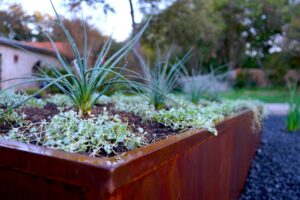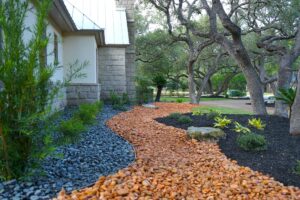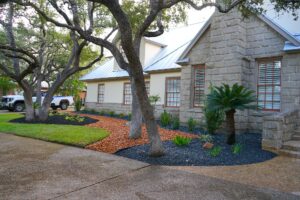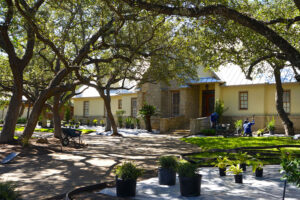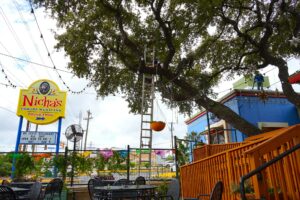Our arborists often get asked this question: When should we have our trees trimmed? The answer is not always as straightforward as we’d like, so we’ve compiled a helpful guide to try and answer this question once and for all. When thinking about pruning, our arborists need to be mindful of the type of tree we’re talking about as well as a number of other factors like the impact of insects, the trees’ susceptibility to disease, and the surrounding landscaping.
Generally, the best time to prune or trim trees and shrubs is during the winter months. From November through March, most trees are dormant which makes it the ideal time for the following reasons:
- Trees are less susceptible to insects or disease.
- There is less impact on the surrounding landscape and our crew can easily see what they’re doing while all the leaves are gone.
- Trees heal faster, meaning that by the time spring rolls around, your tree will be happy and healthy again.
Oh, and one more big reason that winter is better for pruning trees: You save more money!
It is a simple fact that when you book your tree pruning and removal early (like today) you’ll save more money. Don’t wait until the last minute and be disappointed.
Reasons for Pruning:
Pruning is a regular part of all tree and plant maintenance programs at Yard by Design tree care. Proper pruning of plants encourages growth, improves the overall plant health, increases the curb-appeal of your property, and can increase the flower and fruit production.
Prune to increase overall health of plant
- Remove dead or dying branches injured by disease, insect infestation, animals, storms, or other damage.
- Remove branches that rub together
- Remove branch stubs
Maintain intended purposes for plants in a landscape
- Encourage flower and fruit development
- Maintain a dense hedge
- Encourage a desired plant form or special garden forms
Improve appearance of plants and overall curb-appeal
- Control plant size and shape
- Keep shrubs well-proportioned and dense
- Remove unwanted branches, waterspouts, suckers and undesirable fruiting structures that detract from plant appearance
Protect your family & property
- Remove dead branches
- Have hazardous trees taken down
- Prune branches that overhang homes, parking areas, sidewalks, and any place that falling limbs could injure people or damage property
- Eliminate branches that interfere with street lights, traffic signals or overhead wires and any branches that obscure vision at intersections
To avoid certain diseases, pruning in the late winter is especially great.
- Avoid Oak Wilt disease by pruning oaks between November and March. You should never prune your oaks between April and October.
- Prune apple trees between February and late-April.
- Spring or summer pruning increases chances for spread of infection while fall or early-winter pruning can result in growth issues the following season.
- Honey Locusts should be pruned when they are dormant in late winter as it is best to prune in dry conditions.
Prune after blooming
Trees and shrubs that bloom early in the growing season on last year’s growth should be pruned immediately after they finish blooming.
Prune before new growth
Shrubs that are grown primarily for their foliage rather than showy flowers should be pruned in the spring before growth begins.
Hedges and shrubs
After the initial pruning that takes place at planting, hedges need to be pruned often. Typically hedges can be pruned twice a year, in spring and then again in mid summer.
Evergreens
With few exceptions, evergreens (conifers) require little pruning. Different types of evergreens should be pruned according to their varied growth habits.
Call Today and Save
When you book your winter tree pruning services early, you save money and have peace of mind. Call today and speak to one of our arborists directly about reserving your spot. Our arborists will learn more about your plant and ensure that we build the most comprehensive pruning and maintenance plan specifically for your plant.


